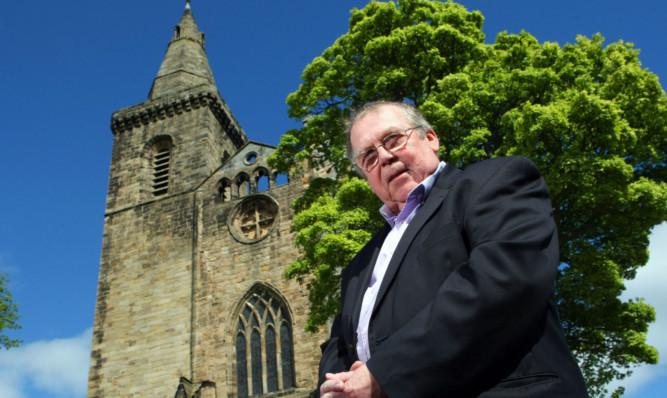It’s the long-running saga that has even reached Hollywood.
While everyone has heard of the controversy over the Elgin Marbles, little is known of a historically important Fife artefact housed in a collection far from these shores.
Former Saline Community Council chairman John Crane is hoping a medieval manuscript penned in Dunfermline could form a centrepiece at the opening of the town’s new museum next year.
“Whatever your views on the repatriation of the Elgin Marbles, it is a fact that countless historical artefacts and manuscripts are located outside their countries of origin,” he said. “Acquired by fair means or foul, very few find their way back home.”
Mr Crane said artefacts of great significance had been returned by British museums in recent years. “I see nothing wrong in that process but what about repatriation in the other direction?”
He was talking of a manuscript written at the Benedictine abbey of Dunfermline during the reign of James III housed in the Royal Library in Madrid.
“The content itself received little attention until Professor Donald Watt from Aberdeen University re-examined it during his preparations for the new edition of Walter Bower’s Scotichronicon. It was obvious that Bower the Abbot of Inchcolm Abbey had access to this manuscript or its contents when he was writing his book on Scottish history,” he said.
He said Dr Alice Taylor of King’s College, Cambridge, made “an excellent case” that the three sections of the manuscript together should be viewed as the earliest surviving history of 12th and 13th Century Scotland.
“Scottish manuscripts of this age and importance are thin on the ground, to say the least, and it would be wonderful if some august body could approach Madrid with a request that it be loaned to Dunfermline for a period covering the opening of the new museum and art gallery,” he added.
Fife Cultural Trust’s museums manager Dallas Mechan said: “At the opening of Dunfermline Carnegie Library and Galleries, we’re taking the opportunity to showcase our own rich and varied collections, something which we have been unable to do for a long time due to space constraints.
“We’re very excited to tell the story of Dunfermline from its remarkable royal history to impressive social and industrial heritage.”
She said galleries would be built for borrowed material and exhibitions. “The borrowing of objects from other institutions is part of an ongoing process and overall strategy for the museum and galleries, in support of our aims of telling Fife’s stories in an innovative way.”
